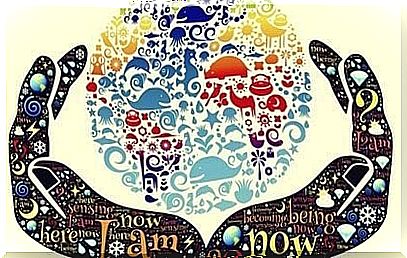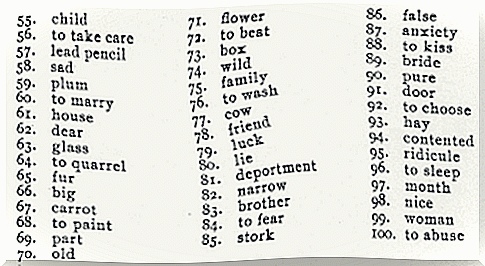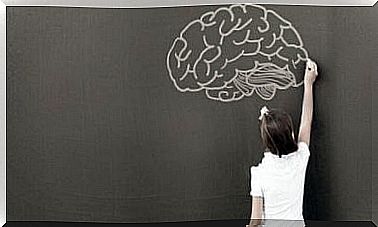Jung’s Word Association Test

One of the more interesting psychological tests is Jung’s word association test. It is based on the idea that our unconscious is sometimes able to take control of the conscious will. Thus, a word can evoke traumas of the past or reveal an unresolved internal conflict.
This instrument has been accepted for several decades and has been applied in many contexts. However, it should be noted that we are facing a projective test. As such, and if used exclusively, it has no reliable diagnostic value. It should be used with other resources and other tests to arrive at clearer and more adjusted conclusions.
The word association experiment or test was created in the middle of the 20th century by Carl Jung. The latter had a clear objective: to unravel the mysteries of the unconscious. Understand its manifestations, give it adequate channels to be able to read it, understand it and, finally, bring out these problems which hindered the patient’s freedom and well-being.
The technique couldn’t be simpler. A person is presented with a stimulus word and the person must respond with the first word that comes to mind. These stimulus concepts almost always awaken a concrete emotional charge.
In addition, the therapist should also read the physical and emotional responses that he will interpret later, after the 100 word test is finished. Although this test has been around for over a century, neuroscience has found evidence to support its effectiveness.

Jung’s word association test: objectives, characteristics and application
At first glance, this test may seem like a game: one person says a word and another answers the first thing that crosses his mind. However, through this dynamic, we do not only pay attention to the word evoked. We must also interpret the physiological reaction. Thus, the Jung word association test is based on a broad theoretical plan that is worth knowing.
The conscious mind and the pain points
Carl Gustav Jung worked early in his career in the Burgh ö lzli psychiatric clinic at the University of Zurich, under the supervision of Eugen Bleuler. Let us remember that this is an essential figure which gave life to many concepts currently used in the field of clinical psychology and psychiatry.
In this context, Jung began to study the processes that accompany traumas and complexes. According to him, one way of understanding them and making them emerge is through dreams or the active imagination. In his daily life with patients, he realized that certain words and expressions act as impulses stimulating the unconscious.
The evocation of a set of key words favored this activation and made it possible to enter into contact with the psychic universe of the trauma, the fears and the conflicts of the patient. To prove this theory, Jung came up with the idea of the Word Association Test (WAT) or Jung’s Word Association Test .

How is it applied?
At first, Jung wanted to let it be known that this test was not useful to everyone. Some people show excessive resistance, others do not take it seriously and, finally, some cannot communicate well (whether it is because of their age, their ability to understand, neurological problems, deficits development, etc.).
- The test consists of presenting 100 stimulus words to the patient.
- Listening to each word, the person must say out loud what is on their mind, quickly and automatically.
- The therapist writes down the term and pays attention to other factors. Response time, embarrassment, facial expression, posture, silence, whether or not the person repeats the stimulus word …
Reliability of Jung’s word association test
Carl Jung realized that this instrument was extremely suitable for family groups. Thanks to him, he could observe identical response patterns, thus identifying the origin of multiple problems.
However, he ended up abandoning this test and his interest in the experimental field of psychiatry some time later. His theories on the collective unconscious or the archetypes appeared a little later. However, this test continued to be applied until 2005 when it fell into disuse. It is now only used in Jungian therapy programs and as a complementary projective technique in certain therapeutic processes.
Despite everything, in 2013, Doctor Leon Petchkowsky carried out a very interesting study on this subject. He demonstrated through magnetic resonance that the words of Jung’s test generated very revealing neurological responses in people. In front of words like parent, family, abuse, fear, child, etc., the mirror neurons were activated.
We also found activity in areas such as the cerebral amygdala, the insular cortex, the hippocampus, etc. The results were very surprising in people with post-traumatic stress disorder. All of this shows us how words can evoke emotions, memories and fragments that we often choose not to take into account. So even though Jung’s word association test is still the target of criticism, it is nonetheless a very interesting tool that enjoys the support of several studies.










